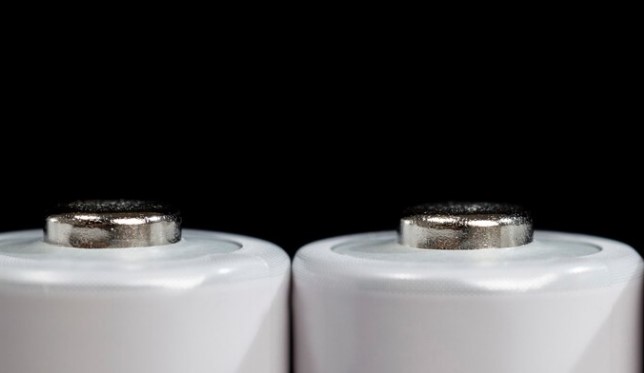The technology we use daily is getting increasingly smaller and more powerful. From CPUs in our computers to LED lights, all electronic devices generate heat. This heat, if not managed properly, can lead to malfunctions and reduced performance. Enter the unsung hero of thermal management – the heat sink. But what exactly is a heat sink, and how does it keep our electronics from melting? In this post, we’ll explore the fascinating world of thermal engineering and look at the role of heat sinks in keeping our gadgets cool.
Understanding Heat Transfer
Before we venture into heat sink territory, it’s essential to grasp the basics of heat transfer. Heat can move from one place to another in various ways – conduction, convection, and radiation are the primary avenues.
Conduction occurs when heat moves through a solid material. The transfer happens within the material, as the atoms and molecules vibrate against one another.
Convection involves the movement of fluids, either liquids or gases, carrying heat. Hotter, less dense fluids rise, while cooler, denser fluids sink, fostering a continuous flow.
Finally, radiation is the transfer of heat in the form of electromagnetic waves. Every object with a temperature above absolute zero emits heat through radiation.
When it comes to electronics, heat is typically dissipated through conduction and convection within the device or its surroundings.
What’s a Heat Sink, and Why Do We Need It?
A heat sink is a passive heat exchanger that directs and enhances the transfer of heat away from a solid-state device or a mechanical system to a medium that can absorb it. This medium is often the surrounding air, but in more advanced setups, it could be a liquid or even another solid. Heat sinks are made from materials with high thermal conductivity, predominantly aluminum and copper, due to their effectiveness at conducting heat.
Electrical components like CPUs, power transistors, and LED lights generate a significant amount of heat. This heat can cause the device to operate at higher temperatures than recommended or reduce its lifespan. To counteract this, heat sinks provide a larger surface area for convection and conduction to occur, effectively ‘sinking’ the heat away from the hot component.
How a Heat Sink Works
A basic heat sink consists of a block or cylinder of a thermally conductive material with fins on the surface to increase the area in contact with the air. The hot component, such as a CPU, has a flat surface called a heat spreader. A thermal paste is applied between the heat spreader and the heat sink to improve thermal conduction. When the hot component functions, the heat spreader conducts the generated heat to the heat sink, which then dissipates it into the air. The larger the surface area of the heat sink, the more effective it is at moving heat away.
In advanced systems, the cooling effect of a heat sink can be further increased by adding fans (active cooling) or combining the heat sink with a liquid cooling system. Liquid cooling involves a pump that circulates a coolant through a block that sits on top of the hot component, transferring the heat to the radiator, where it is then dissipated.
Design and Optimization of Heat Sinks
The efficiency of a heat sink is influenced by its design. Parameters such as the number, thickness, and spacing of the fins, as well as the material used, play a crucial role.
Material: Aluminum is lightweight and relatively inexpensive, which makes it a popular choice for general use heat sinks. Copper, on the other hand, is heavier, more expensive, but has a much higher thermal conductivity, making it the preferred material for high-performance applications.
Fins: The geometry of the fins is designed to maximize surface area while also considering aerodynamics to allow air to flow smoothly over them. The fins should not be packed too tightly, as this can restrict airflow and reduce the sink’s efficiency.
Base: The base of the heat sink, which makes direct contact with the hot component, should be as flat as possible to ensure maximum surface area contact.
Mounting: Proper mounting of the heat sink is critical for effective thermal transfer. Too much or too little pressure can degrade the thermal interface and negatively impact the heat sink’s performance.
The Future of Heat Sinks
The demand for smaller, more efficient electronics is pushing the boundaries of thermal management. New materials such as graphine are being explored for their extraordinarily high thermal conductivity, potentially rivaling or even surpassing copper.
Additionally, additive manufacturing, or 3D printing, is opening up new possibilities for heat sink design. With 3D printing, complex geometries that were previously impossible to manufacture are now within reach, allowing for more precise tailoring of heat sinks to the specific needs of different devices.
Closing Thoughts
Heat sinks play a vital role in the performance, reliability, and longevity of our electronics. They’re a prime example of how engineering tackles the intricate problem of heat management in innovative ways. As devices continue to evolve, so too will the technology embedded within them, ensuring that we can keep our cool – literally.
For those fascinated by the unseen mechanics behind our powerful machines, understanding the function of a heat sink opens a window into the intricate dance of energy and matter at the heart of our technology. Whether you’re a tech enthusiast, an aspiring engineer, or just someone curious about the gadgets you rely on, the heat sink is a tangible bridge between theory and practice, showing us that even in the most sophisticated systems, sometimes the simplest solutions are the most effective.



